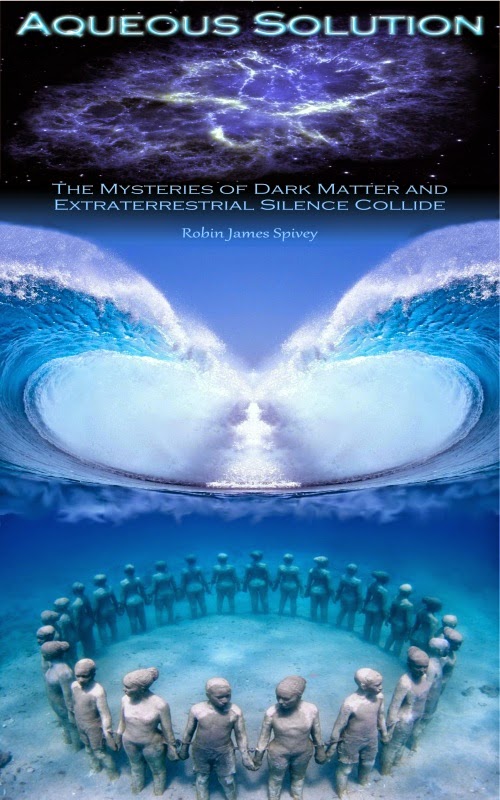In a previous post I wrote about the fine
tuning problem, based on the verification that many of the properties of
the universe seem designed to make our existence possible. In other words:
those properties verify the anthropic principle, another way of
saying that the universe must fulfill all the conditions needed for our
existence, since we are here. On the other hand, the mediocrity principle
states that the anthropic conditions of the universe should be the necessary
minimum to make our existence possible.
Robin James Spivey has lately published a book
titled Aqueous
solution, where he asserts that certain properties of the cosmos are supranthropic (they go beyond the anthropic
principle) because they are not required for our existence, but their presence
guarantees our long-range survival. According to Spivey, those properties are
an inkling of design stronger than the anthropic properties, as the mediocrity
principle opposes their presence.
Let us consider as an example the anthropic
properties of iron and nickel. Two isotopes of these elements, 62Ni
and 56Fe, have the highest possible nuclear binding energy. In the
reactions taking place in certain stars, 56Ni is the heaviest
element that can be built by means of fusion, but being radioactive, it decays
spontaneously into 56Fe, the most stable isotope of them all. When
those stars become supernovae (they explode) most of the matter they spread in
space is made of iron and nickel with a spattering of silicates. It so happens
that iron and nickel (with cobalt) are the only ferromagnetic elements. Their
ferromagnetism helps keeping lumps of matter together, that finally become
Earth-like planets. As the two metals are denser, iron and nickel end-up in the
core of the planet, while the lighter silicates build the mantle and the crust.
If the planet spins with enough speed, their ferromagnetic core generates a
magnetic field that deflects the noxious particles of the solar wind that would
sweep along the planet atmosphere and destroy the budging life. Therefore,
without the peculiar properties of iron and nickel and the fact that a mixture
of those two elements is most abundant in supernovae explosions, perhaps life
would not be possible.
Let us look now at the supranthropic properties
of iron, according to Spivey. It so happens that iron, at pressure and
temperature conditions similar to those in the core of Earth-like planets, can
be in two different phases: hcp and fcc. Just before the transition between
those two phases, the energy of orbital 3d in the iron atom (usually empty)
gets lower, until it becomes less than the energy of the 4s orbital (which
usually contains one electron). Just before the intersection of both energies,
in a zone corresponding to the pressure and temperature at the core of
Earth-like planets, the transition energy between both orbitals could be equal
to the disintegration energy of a neutrino and its corresponding anti-neutrino.
The core of a planet could therefore absorb that energy. If the number of
neutrinos were sufficient, that energy would be enough to assure the
persistence of life in that planet, even in the absence of a nearby star.
Therefore, the supranthropic properties of iron could assure our long-lasting
existence beyond the end of stars in the universe.
Can this theory be tested? Spivey proposes
several ways. On the one hand, the neutrino and the anti-neutrino should be the
same particle, which has been proposed but not proved. On the other hand, to
optimize the indicated effect, the mass of the neutrino should be about 0.05
electron-Volt (we just know that it must be lower than 2 eV). Finally Spivey
launches the hypothesis of the existence of a new particle (a sterile neutrino
with a mass around 1.5 eV) which should be the main component of dark matter
and would help keep together all the ordinary neutrinos in galaxies. All these
predictions should be testable (or falsifiable) in a not too far future.
Spivey then offers an original solution to the Fermi paradox (if
there are any extra-terrestrial intelligences, why aren’t they here?).
He says that the Milky Way has not enough neutrinos to assure our
long-range existence. To find them, we should travel to the nearest galactic
cumulus, Virgo, 60 million light-years from us. Spivey’s answer to the
paradox is this: they are not here because they have all migrated to Virgo cumulus, as
we will do when our scientific progress will make it possible to test this
theory, and our technological progress will make it possible to travel to
another galaxy.
Is this science-fiction? Just now, it is, just
the same as the multiverse theories presented by many physicists as serious
science. This one, at least, can be falsified.
Manuel Alfonseca


No comments:
Post a Comment